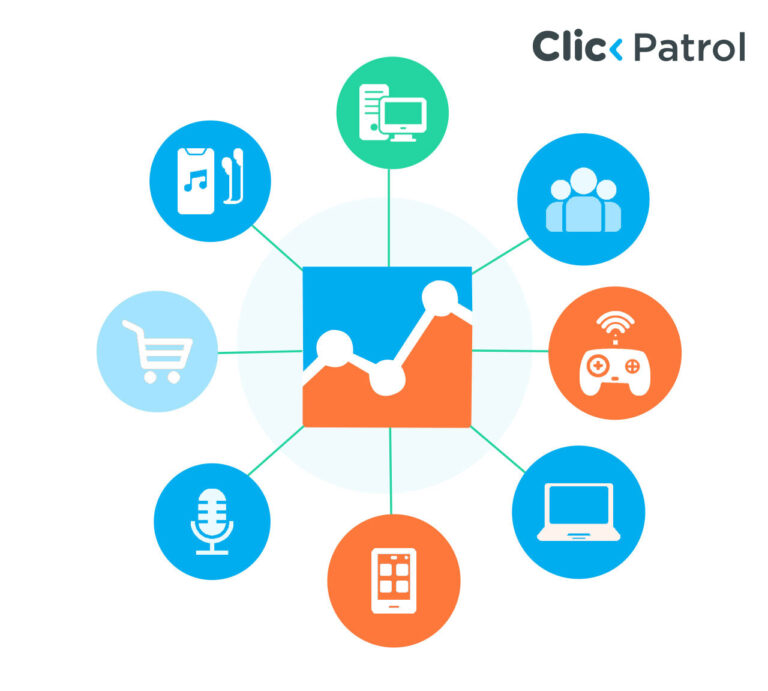
Top Bot Detection Techniques
Abisola Tanzako | Sep 04, 2024

Table of Contents
Learning about bot detection techniques can be a game changer for your marketing campaigns.As digital technology advances, bots’ emergence and sophistication pose fascinating challenges and unique opportunities. Bot detection distinguishes whether a website’s activity comes from human users or automated bots. While some bots carry out legitimate tasks, like site engine crawling, bad bots carry out tasks like spreading spam.
Bots have been increasing in popularity and are becoming harder to detect due to their sophistication. As these bad bots become more sophisticated, it becomes important for digital platforms to prioritize bot detection and ways to mitigate their effects. This article delves into bot detection techniques and ways to eliminate the threats bad bots pose.
What are bots?
A bot, short for robot, is an automated software application that performs repetitive tasks over a network. It typically imitates or replaces human user behavior and performs tasks faster than humans. It can perform tasks with little to no human intervention, making it efficient for tasks that require speed and repetition. Bots can be classified into two categories: good bots and bad bots.
1. Good bots
These benefit a website or any online platform. They are built with good intentions, read the robots.txt file, and respect the rules set by regulators. Some of the uses of good bots are engine crawlers such as Googlebot scanning web pages and indexing them to make them visible for search engine results.
Chatbots are virtual assistants that communicate with humans, answer questions, provide relevant knowledge, and perform other routine procedures. Social media bots post useful content and interact with other users.
2. Bad bots
These are bots that are harmful to a website. They are used to scrape data, launch attacks, and negatively affect the user experience. These are some types of bad bots:
- Spam bots mimic human behavior and are used to spread content. They usually create fake accounts and send spam messages or comments on forums.
- Web scrapers: This is the use of bots to extract data from websites. Web scraping could be negative or positive, depending on how the data is used. When the scraped data is used to copy content, create fake websites, or engage in ad fraud, it becomes bad.
- Distributed denial-of-service bots (DDoS bots) flood a server with requests till it becomes overloaded and crashes. This can disrupt services and prevent legitimate users from accessing the service or the website.
- Click fraud: Click fraud, or ad fraud, is the practice of fabricating impressions, clicks, and page views to bill advertisers without generating any purchases. Businesses lose billions of dollars yearly due to the enormous number of bad bots.
This frequently affects publishers who want to maintain good working relationships with their sponsors, and click fraud might seriously damage their reputation. - Credential stuffing bots: This is an automated cyberattack in which hackers use bots to continually attempt to access a website with credentials purchased from the dark web.
- Scalper bots: Scalper bots automate buying tickets online, online auctions, and e-commerce websites for items in great demand or limited supply. They operate by continuously requesting to buy goods as soon as they become available, frequently bypassing security measures and rate limits.
They can quickly deplete stock and resell goods for extremely high prices in other markets.
The effect of bad bots
The impact of bad bots can be enormous. It does not only affect the target organization but also its customers, partners, and the entire digital ecosystem. These are some of the effects of bad bot attacks:
- Financial losses: Bad bot attacks can cause businesses to suffer large losses due to revenue theft, fraudulent transactions, higher operational costs for attack mitigation, and possible fines or legal fees for breaching regulations.
- Account takeover (ATO): User accounts and private information, including credit card numbers, addresses, loyalty points, gift cards, and other stored values, become vulnerable to hacking. They can sell access to other hackers, use these accounts to make fraudulent purchases, or assume user identities to commit identity theft or phishing scams.
- Reputational damage: Bad bot attacks might cause businesses and organizations to lose credibility and reputation. Consumers may need to be convinced about the platform’s security, which will harm brand loyalty over time and result in lower user engagement and decreased client retention.
- Operational disruption: Bad bot attacks can interfere with websites, apps, and online services’ regular operation, resulting in downtime, poor performance, and decreased user and staff productivity. It could also have far-reaching effects on income generation and business operations.
- Negative SEO impact: Web scraping and content scraping by bad bots can harm a website’s search engine optimization (SEO) efforts by creating duplicate information, diluting the importance of keywords, and interfering with indexing, which may lead to a drop in organic traffic, online exposure, and search engine rankings.
- Legal and regulatory consequences: Bad bot attacks may break cybersecurity, consumer protection, and data privacy laws, rules, and industry standards. If an organization is discovered to be in violation, affected individuals or regulatory agencies may launch legal action, fines, and regulatory inquiries.
- Social and moral consequences: Bad bot assaults can have wider societal and moral implications, such as disseminating false information, influencing public opinion, and undermining confidence in online networks. This may compromise the integrity of public discussions, democratic procedures, and social standards.
- Loss of competitive advantage: Bad bot attacks might reduce a company’s competitive advantage by stealing sensitive information, company intelligence, or intellectual property.
Bot detection techniques
Bot detection evaluates all traffic to a website, mobile application, or API to detect and prevent harmful bots while allowing access to genuine users and approved partner bots. This aims to protect systems from the negative effects of bot activities like data scraping, website spamming, or account takeovers.
This is done by employing different techniques and tools to identify and differentiate between human users and bots. When effectively utilized, these techniques can help maintain the integrity of online platforms and websites by reducing the risks associated with bot activities. Some of these techniques are:
- Device fingerprinting: Create distinct fingerprints on each device dependent on characteristics such as operating system, installed plugins, screen resolution, and browser settings to differentiate human users and bots.
- IP analysis: Examine the IP addresses connected with user interactions to see whether they are suspicious or recognized bot IPs. Using IP reputation databases or blacklisting may be necessary for this.
- User behavior analysis: Examine user behavior patterns, such as keystrokes, mouse movements, and page navigation, for anomalies that might indicate bot activity. User agents such as Google Chrome can also create a baseline of typical behavior and check whether the current user deviates from it.
- Traffic analysis: To detect bot-generated traffic, examine patterns and traits of incoming traffic, such as unusual spikes in requests, a significant amount of traffic originating from a single source, or traffic from strange locations.
- CAPTCHA challenges: Implement CAPTCHA to confirm that users are human by presenting them with tasks that bots often struggle to accomplish.
- Machine learning algorithms: This algorithm such as ClickPatrol analyzes massive datasets with machine learning models like decision trees, random forests, and KNN to find trends and characteristics that differentiate bots from human users. To increase accuracy, these models can be trained with labeled data.
- Web Application Firewall (WAF): this is a type of protection that prevents harmful requests and filters incoming network data.
It is important to note that crawlers can be granted access to a website using robots.txt files. This guarantees that beneficial or partner bots can access their platform.
Importance of bot detection
As the digital world keeps evolving, so do the threats from malicious bots. Bots are becoming increasingly sophisticated and pose serious challenges to online platforms and websites. It becomes important for these platforms and websites to effectively utilize the various bot detection mechanisms available to improve their security and overall user experience.
There is no one-size-fits-all when it comes to bot detection. However, using these techniques effectively and keeping them up-to-date adds a layer of security to these platforms.
FAQs
Q. 1 What are bots, and what are they used for?
Bots are automated software applications that perform repetitive tasks over a network. They can be used for various purposes, such as search engine indexing or customer service, and they can also be used for malicious purposes, such as spamming and carrying out DDoS attacks.
Q. 2 Are CAPTCHAs effective for bot detection?
CAPTCHAs can be used for bot detection. To achieve effective bot detection, CAPTCHAs should be used as a part of a broader strategy. This strategy might include device fingerprinting, behavioral analysis, and IP analysis.
Q. 3 Is bot detection important?
Yes, bot detection is important. It can be used to protect websites and online platforms from the activities of bad bots, which could cause them financial losses and reputational damage.
Q. 4 What is the difference between good bots and bad bots?
Good bots are built to perform beneficial tasks, such as search engine indexing or posting content on social media pages, while bad bots are built with malicious intents, such as data theft or click fraud.





